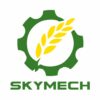The Application and Development Trends of Brazing Additive Tech in Agri Machinery Soil-Contact Components
Soil-contacting parts of agricultural machinery, such as disc harrows, plowshares, rotary blades, and subsoiling shovel tips, endure direct contact with soil, quartz, feldspar, plant silicates, crop straw, and weeds during operation. Friction and wear are the primary reasons for their failure, with over 80% of these parts being scrapped due to wear. Brazing additive technology (BAT) is utilized to reinforce these parts, significantly improving their wear resistance and contributing to enhanced energy efficiency and environmental sustainability in agriculture.
Application of heterogeneous additives in soil contact parts of agricultural machinery
At present, the commonly used materials for agricultural machinery soil contact parts are shown in Table 1. Commonly used heterogeneous additive methods for soil-contact parts of agricultural machinery mainly include surfacing, cladding, and brazing technologies.
| Table 1 Material selection of soil-engaging components for agricultural machinery | |
| soil-engaging components | Common materials |
| plow share | 65Mn、60Si2Mn White Cast Iron,Ductile Cast Iron |
| plow the wall | 35#Steel 65Mn Q275 Cold-hardened Cast Iron |
| Rotary tiller blade | 65Mn、 60Si2Mn |
| Disc harrow blade | 65Mn Q275 |
| Riding shovel | 65Mn |
| Subsoiling shovel | 65Mn 35#steel、Q215 Carburized |
In the field of agricultural machinery, soil-contact components such as plow blades, cultivator teeth, and harrow discs blade are subject to severe wear and tear due to constant contact with abrasive soil particles. To enhance the durability and performance of these components, advanced surface engineering techniques like brazing additive technology (BAT) have emerged as promising solutions.
BAT involves the deposition of a hard, wear-resistant material onto the surface of a base metal component using a brazing process. This creates a composite structure that combines the strength and toughness of the base metal with the superior wear resistance of the added material. In the context of agricultural machinery, BAT can be used to coat soil-contact components with materials like carbides, ceramics, or other hard phases that are resistant to abrasion and corrosion.
The advantages of BAT in agricultural applications are numerous. Firstly, it allows for the customization of coating properties to match specific soil types and working conditions, thereby improving the efficiency and lifespan of the machinery. Secondly, BAT can be applied to both new and worn components, offering a cost-effective way to extend the service life of existing equipment. Finally, the process is relatively low-temperature compared to other surface treatment methods, which minimizes the risk of damaging the base material during processing.


The current state of BAT in agricultural machinery shows promising results. Trials and field tests have demonstrated significant improvements in the wear resistance and longevity of soil-contact components treated with BAT. However, there are still challenges to overcome, such as optimizing the brazing process for large-scale production and ensuring the compatibility of the coating with the working environment.
Looking ahead, the development trends of BAT in agriculture are likely to focus on several key areas. Firstly, there will be a continued push towards developing new materials and processes that offer even higher levels of wear resistance and durability. Secondly, there will be an increasing emphasis on automation and process optimization to reduce costs and increase throughput. Finally, there will be a need to establish industry standards and certification systems to ensure the quality and reliability of BAT-coated components.
In conclusion, brazing additive technology represents a significant advancement in the field of agricultural machinery surface engineering. Its ability to enhance the performance and durability of soil-contact components offers a promising solution to the challenges posed by harsh working environments. As research and development efforts continue, we can expect to see BAT become an increasingly important tool in the quest for more efficient and sustainable agricultural practices.
Tip: agri-wear part will show you on our video website on YouTube


